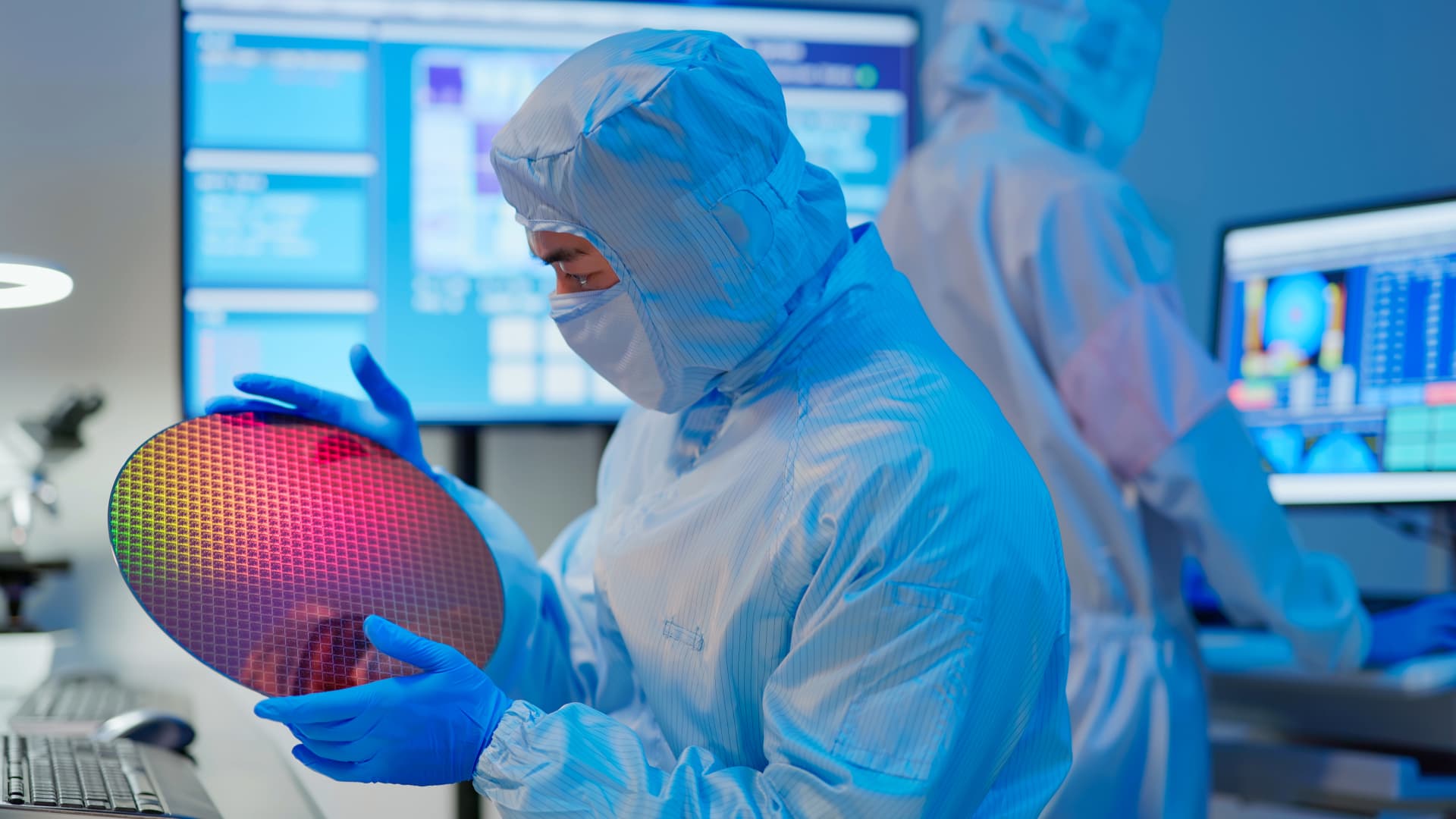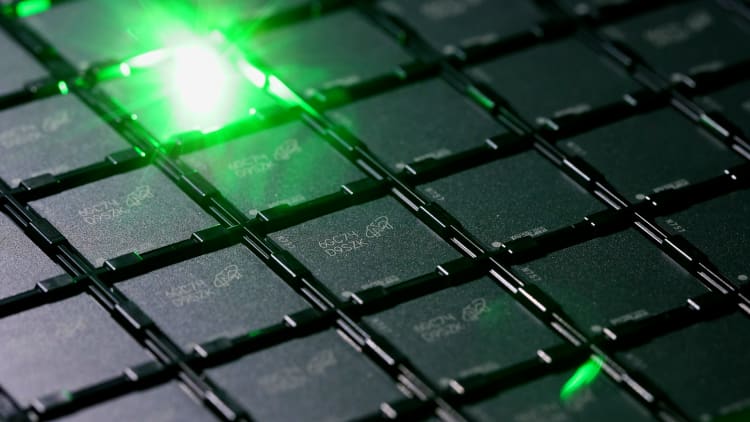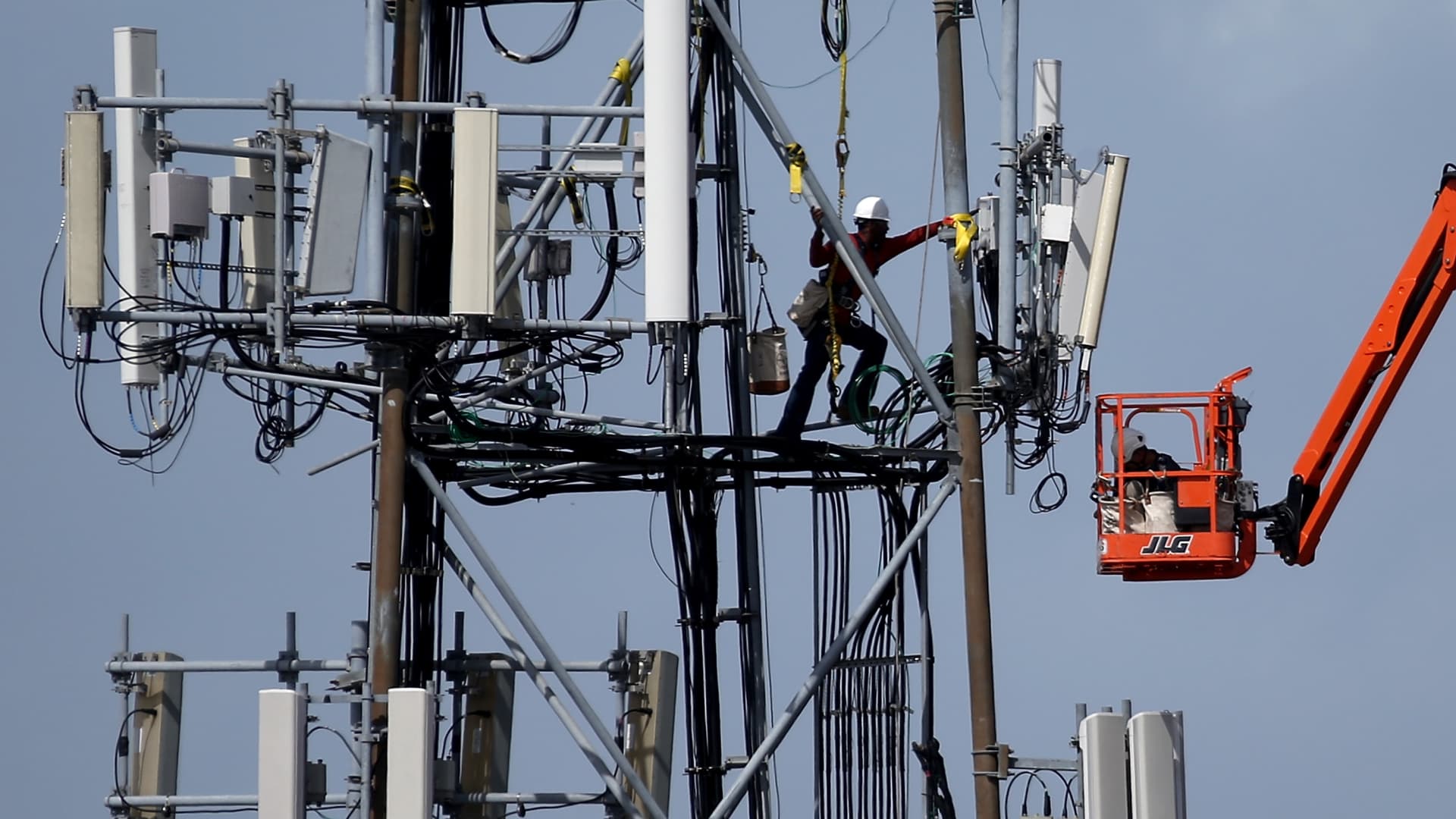
A technician holds a semiconductor wafer at a manufacturing plant.
Ponywang | E+ | Getty Images
The recent earnings calls of the world’s two largest memory chipmakers signaled that weak demand may have finally bottomed out.
Samsung’s operating profit in the third quarter jumped 262.6% as compared to the second quarter. This followed a 85.15% drop in first quarter operating profit from the previous quarter and a small 4.68% improvement in second-quarter operating profit from the first quarter.
SK Hynix in its quarterly report said that its dynamic random-access memory business returned to profit in the third quarter, after losses in the first two quarters of this year.
“One of the big drivers of memory price recovering is industry-wide supply reduction and thus falling inventories,” James Lim, senior research analyst at Dalton Investments, told CNBC.
“Inventories at personal computer and mobile customers seem to have come down a lot and very low memory prices tend to induce restocking or having more memory content per device,” said Lim.
The South Korean companies are the world’s two largest makers of DRAM chips, according to data from market research firm TrendForce, with U.S.-based Micron trailing in third place. Such memory chips are found in consumer devices such as laptops and smartphones.
“We received numerous purchase inquiries amid widening awareness of the industry reaching a bottom, following the industry-wide production cuts,” Samsung said in its earnings report last week. Chipmakers have been running down excess inventories by scaling back production.
During the pandemic, companies stockpiled memory chips to meet record electronics demand, but were left with excess inventory when that pressure eased. Inflation has caused consumers to rein in spending and cut back on purchases of consumer devices, driving down demand and prices for memory chips.

Kazunori Ito, director of research at Morningstar, said that “earnings calls confirmed that the memory industry has bottomed out as expected.”
“DRAM average selling prices, or ASPs, rose by midsingle digits for Samsung and 10% for SK Hynix, sequentially, and it was the first time in eight quarters that Samsung experienced a price increase,” Ito said in a Nov. 1 report.
“We have made minor adjustments to our earnings forecasts for South Korean memory suppliers,” Ito said. The financial services firm added that Samsung’s shares are “undervalued” while SK Hynix’s shares “have about 18%-20% upside to our fair value estimate.”
Other chipmakers have also projected strong outlooks.
The world’s largest contract chipmaker Taiwan Semiconductor Manufacturing Company exceeded analysts’ expectations and predicted the worst could soon be over for the chip industry. TSMC makes the most advanced processors for companies like Apple and Nvidia based on Arm‘s architecture.
U.S.-based Qualcomm also gave a strong forecast for the current quarter, pointing to a chip recovery. Qualcomm makes the processors at the heart of most high-end Android devices and many lower-end phones as well.
“Although inventory levels peaked in mid-2023, they are still at the high levels, especially for NAND [flash memory],” Ito of Morningstar said.
NAND is another important memory chip that often works together with DRAM in PCs, servers and smartphones. It stores data but does not require power like DRAM.
“As a result, memory suppliers are expected to continue maintaining lower capacity utilization and to remain cautious about increasing production capacity next year, which should be favorable for memory prices due to limited supply,” Ito said.
TrendForce said it expects memory suppliers to continue “scaling back production of both DRAM and NAND Flash in 2024,” in particular in the “financially struggling NAND Flash sector.” The research firm also projected DRAM and NAND Flash demand to increase by 13% and 16% respectively in 2024.
AI boom to uplift profits
In the third quarter, strong demand for advanced, high-performance chips in generative AI has helped offset a slowdown for chips found in computers and smartphones, SK Hynix said in its earnings report.
“On servers, AI demand has been another strong driver,” said Lim of Dalton Investments.
ChatGPT and other large language models need a lot of advanced memory chips, which enable such generative AI models to remember details from past conversations and user preferences in order to generate humanlike responses.
“DRAM business … is expected to continue to improve along with the generative AI boom. The NAND flash business, which continues to suffer losses, is also showing signs of improvement,” SK Hynix said in a statement.
On the outlook for memory demand, Samsung said it expects fourth-quarter demand to pick up with year-end promotions, new product launches by its major customers as well as strong demand for generative AI.






